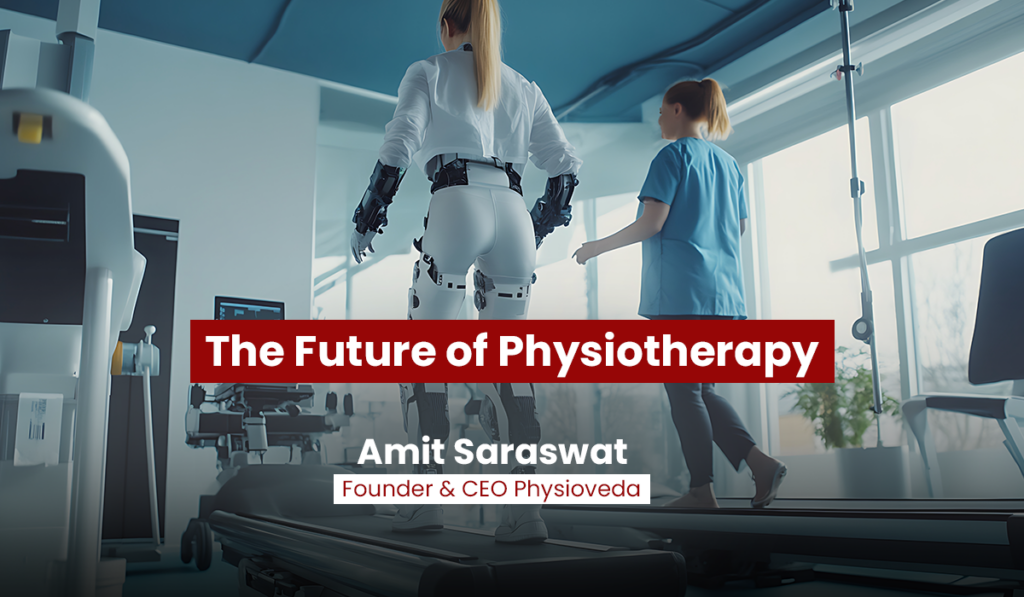Physiotherapy is evolving at a rapid pace, driven by technological advancements, new treatment methodologies, and an increasing demand for personalized healthcare. As a healthcare professional, staying ahead of these trends is crucial to providing the best care to patients and ensuring professional growth. Here are some key developments shaping the future of physiotherapy.
1. Integration of Artificial Intelligence (AI) and Machine Learning
AI and machine learning are revolutionizing healthcare, and physiotherapy is no exception. AI-powered rehabilitation programs analyze patient data, monitor progress, and provide personalized treatment plans. Wearable devices with AI capabilities offer real-time feedback, helping patients perform exercises correctly, reducing recovery time, and improving outcomes.
2. Tele-Physiotherapy and Remote Care
The pandemic accelerated the adoption of telehealth, including tele-physiotherapy. Virtual consultations, remote assessments, and digital exercise programs allow patients to receive expert guidance from the comfort of their homes. This trend is expected to grow, making physiotherapy more accessible, especially for individuals in remote or underserved areas.
3. Robotics and Assistive Devices
Robotic-assisted therapy is making significant strides in physiotherapy, particularly in neurorehabilitation. Exoskeletons and robotic limbs help patients regain mobility after strokes or spinal cord injuries. These devices enhance therapy by providing precise, consistent, and measurable movements, improving patient outcomes.
4. Personalized and Data-Driven Treatment Plans
Advancements in big data and analytics enable physiotherapists to design customized treatment programs based on individual patient needs. By analyzing movement patterns, muscle activity, and response to therapy, practitioners can optimize rehabilitation strategies for faster and more effective recovery.
5. Virtual Reality (VR) and Augmented Reality (AR) in Rehabilitation
VR and AR technologies are transforming rehabilitation by creating engaging and interactive therapy sessions. These tools improve motor skills, balance, and coordination, making therapy more enjoyable and effective. For example, VR-based gait training is being used for stroke and Parkinson’s patients to improve their walking patterns.
6. Regenerative Medicine and Physiotherapy
The integration of regenerative medicine, such as stem cell therapy and platelet-rich plasma (PRP) injections, is redefining musculoskeletal rehabilitation. Physiotherapists are working alongside medical researchers to incorporate these treatments into rehabilitation protocols, potentially reducing recovery times and enhancing tissue repair.
7. Preventive Physiotherapy and Wellness Programs
As the focus shifts from treatment to prevention, physiotherapy is playing a more significant role in overall health and wellness. Workplace ergonomics, injury prevention programs, and lifestyle modifications are becoming key areas of physiotherapy practice. Healthcare professionals are increasingly collaborating with corporate sectors to promote employee well-being and reduce workplace injuries.
8. Holistic and Multidisciplinary Approaches
Physiotherapy is moving towards a holistic model that integrates nutrition, mental health, and alternative therapies like acupuncture and yoga. This multidisciplinary approach enhances patient recovery by addressing both physical and psychological aspects of health.
9. Wearable Technology for Continuous Monitoring
Wearable devices, such as smart braces, posture correctors, and activity trackers, provide real-time data on patient movements and recovery progress. These devices empower both physiotherapists and patients to monitor improvements and adjust treatment plans accordingly.
10. Advancements in Manual Therapy Techniques
While technology is playing a crucial role in physiotherapy, advancements in manual therapy techniques remain fundamental. New research on soft tissue mobilization, myofascial release, and joint manipulation continues to refine hands-on therapy, ensuring better patient outcomes.
Conclusion
The future of physiotherapy is bright, with groundbreaking innovations improving patient care, accessibility, and treatment effectiveness. Healthcare professionals must embrace these trends to stay ahead in their practice and offer the best possible care. By integrating technology, personalized treatments, and holistic approaches, physiotherapists can revolutionize rehabilitation and contribute significantly to the healthcare industry.


